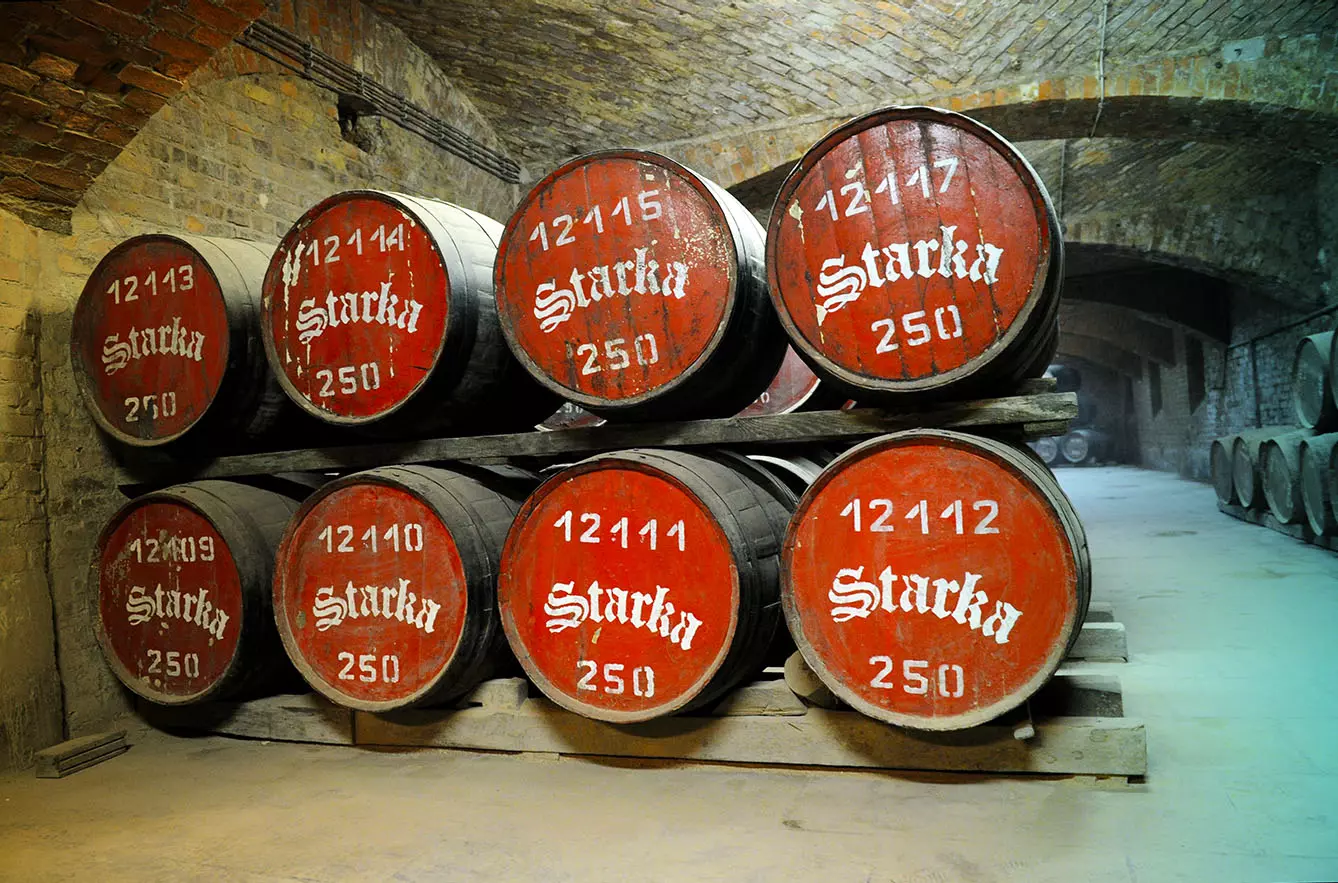The ongoing discussion on who invented vodka is far from settled, with the primary contenders being Poland, Russia, and the Baltic countries. However, there is one more front in this war, which may include even more participants: who invented the method for maturing alcohol?
The alcohol becomes infused with flavors from the wood, and time mellows any harsh aftertaste
Technically, the reason for aging spirits in oak casks is to smooth the taste of the alcohol. The alcohol becomes infused with flavors from the wood, and time mellows any harsh aftertaste. Nowadays, most associate oak-barrel aging with whisky and cognac, but it was already a technique in use in Central Europe back in the 15th century. And, unlike the former western examples, making Starka was not only a technique but also a custom.
You gotta keep your Starka way dow in the hole
Current vodkas are usually column-distilled mixtures of very pure alcohol and water, with a “spicy” but relatively smooth flavor profile. However, primitive forms of distillation left many now-unwanted fractions of alcohol; thus, aging vodka was a way to make it more palate-friendly. This is where Starka comes in, with its oaky maturity.
The name has two possible origins, depending on who you ask. “Stary” means “old” in Polish, so the name is connected to the aging process. At the time, “Starka” in Polish referred to both the type of vodka and an old woman. An alternative meaning refers to the stork, which in Lithuanian is also called “starkus.” What does a stork do? At least in Central Europe, it brings babies to their parents.
The first descriptions of making Starka to commemorate a child’s birth date back to the 15th century. As soon as a man found out about the birth of his firstborn son, he would distill alcohol in a home distillery. Afterward, it would be poured into oak casks, sealed with beeswax, and then buried underground. The maturation process of this type of vodka took many years, as this cask would only be opened as soon as the son got married.
The custom of drinking Starka was not limited to weddings. 18th and 19th-century literature is rife with mentions of barrel-aged vodka as an aperitif or leisurely sipped. The literature also mentions condemning people for binge-drinking something that was supposed to be savored.
There are currently several brands of Starka on the market, some claiming to be as mature as 50 years old. Some distillers try to achieve comparable taste with an herbal infusion. Regardless of which brand or type suits your taste, sipping and savoring is still the best method to enjoy it responsibly.
See Also: Bruce Willis Helped Poles in Their Claim to Have Invented Vodka







